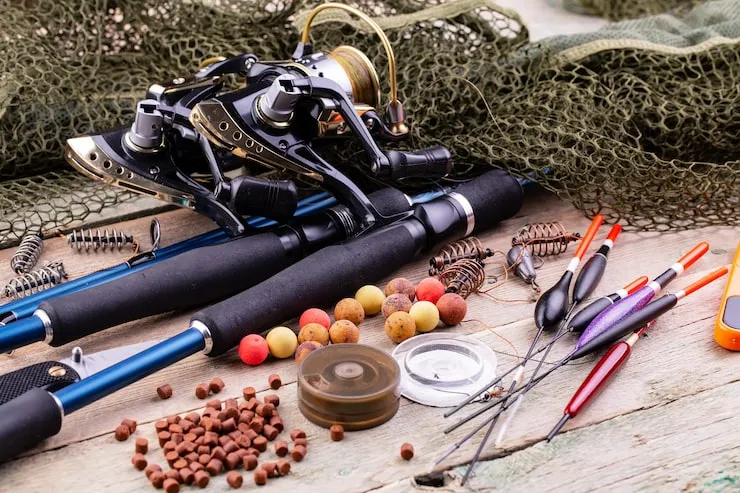The war against annoying insects that bite, sting or otherwise bring discomfort to the outdoor enthusiast is usually carried out with multiple campaigns: the direct frontal assaults by an onslaught of warriors, the persistent and bold Kamikaze-like loner, and the infiltrator who sneaks behind enemy lines and attacks undercover. To know your enemy is the first step in defeating them. The most common critters we typically face throughout our outdoor battlefield include:
MOSQUITOS — The Aedes vexesspecies includes the anopheleswhich carries malaria, West Nile, yellow fever, dingus, encephalitis and the dreaded Zika virus.‘Skeeters’ can detect carbon dioxide in breath up to 25 yards away;
TICKS — Transmitters of Rocky Mountain Spotted Fever and Lyme Disease, ticks can also go several years without feeding! They don’t jump or fly but rather hold onto their perch with their rear legs and grab onto prey with their longer front legs. Even the nearly invisible nymphal stage of the tick can bite and spread disease. They cycle through tiny mammals up through larger hosts;
CHIGGERS — Bites are caused by tiny, nearly invisible mite larvae and can take up to four days to feed on a human host;
MIDGES/No-See-Ums — Common mostly to coastal areas, swamps and marshes, they are known to attack in large numbers.
DEER FLIES, ET AL — Collectively there are about one million species of “flies”worldwide including black flies, horse flies and even house flies. They are associated with Sand Fly Fever, River Blindness and other diseases.
BEES/WASPS- SPIDERS-SCORPIONS — These critters aren’t repelled by any of the conventional options but their bites or stings can be very serious. The best protection is awareness of their proximity, avoid agitating them, and luck!
REPELLENT! REPELLENT? — Officially classified as a pesticide, the chemical repellents we use to fight off insects actually mask or hide us from our attackers rather than “repel”the attacker. Repellents work by preventing, destroying, repelling or mitigating any pest. They work by creating a vapor barrier that masks the human attractant odors mosquitos and other critters sense and use to zero in on us in the first place. Repellent hides signature odors from over 300 chemicals produced by humans – and that mosquitos can ‘smell’. However, they can also track us down from the CO2 in our breath.
The Environmental Protection Agency has several skin-applied active repellent ingredients registered in the United States:
DEET — Effective against mosquitos, biting flies, fleas and small flying insects, it is probably the most traditionally wide-known bug juice chemical. DEET is encapsulated in a polymer and gradually released over a period of time, typically between 8-12 hours. Solutions that contain 30% DEET provide optimum effectiveness. [WARNING: It’s a “plasticizer”- it can damage rubber, plastic. leather, vinyl, rayon, elastic and auto paint].
PICARIDIN — A synthetic chemical extract similar to natural ones from the chrysanthemum flower. An alternative to DEET, but better in many cases: doesn’t damage fabric, surfaces or most materials. The optimum repellent solutions contain 20% Picaridin.
OIL OF LEMON EUCALYPTUS — A synthesized plant oil effective as a repellent at optimum concentrations of 30%. [WARNING: It may cause skin irritation in some users; should not be applied to children under 3 years of age].
IR3535 — A synthesized plant oil repellent with no adverse affects; not harmful when ingested, inhaled or used on the skin.
OTHER CONTENDERS — lemon grass, citronella, cedar, geraniums and several other natural remedies have often been cited as natural plant oil repellents. Safe but questionably/marginally effective.
Treat your clothes instead — Impregnate your clothes with repellent instead. The repellent Permethrin is bonded directly to the fabric providing effective, odorless insect protection that survives undiminished for up to 70 washings. Permethrin-treated clothing repels mosquitos, ants, ticks, flies, chiggers and midges – pretty much all the usual suspects you’ll encounter on water or a shore. It is used in a full range of clothing apparel (shirts, shorts, socks,) as well as accessories such as bandanas and camping blankets.
Physical Clothing Barriers — Standard issue in most backcountry paddling waters, a mesh head net worn over the head, onto the shoulders and even full torso, can keep the mosquitos from biting. Mesh/Insect Netting apparel with elastic hems and clip lanyards stay in position better than cheap slip-overs that tend to shift. Consider loose fitting, fine mesh for visibility that is also impregnated with repellent.
With so many options, myriad products on the market and varying research into the range of effectiveness (do colors matter, should you eat more garlic, etc., etc., etc.) personal experimentation is probably the best way to learn what works for you outside the normal range of proven options.
Repellent Appliances — Electric/mechanical devices that either emit repellent into the air (Thermacells) or attract and zap insects (electronic traps).
IMPORTANT TIPS ON REPELLENTS AND INSECT BITES:
- Do not dry clean insect repellent fabric clothing
- Do not apply insect repellents on infants younger than 2 years old
- When sting is on fingers, hand, wrists – remove all jewelry as swelling may cause painful/damaging restrictions
- Check concentrations of recommended repellents – only high % concentrations are effective
- Use just enough repellent to cover skin, heavier doses are not more effective
- Don’t use near food, fire, open skin wounds, eyes, mouth
- Do not apply repellent to children’s hands, rub on your own hands and apply them onto child
- Mosquitos can bite through tight clothing
- Light colored clothing makes it easier to spot ticks
Our outdoor world is shared by millions of living critters, some with pretty nasty habits of trying to spoil our enjoyment of that environment. Modern living through chemistry in conjunction with a little help from Ma Nature, and we can at least repel most of them, for a while at least.















